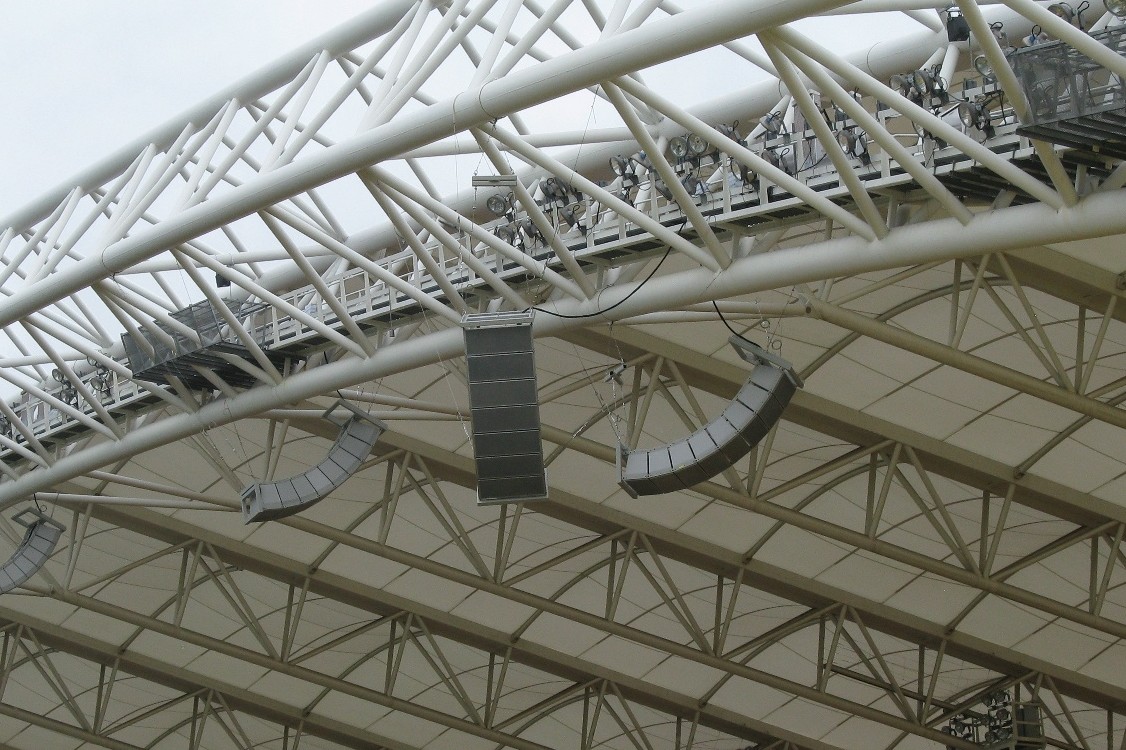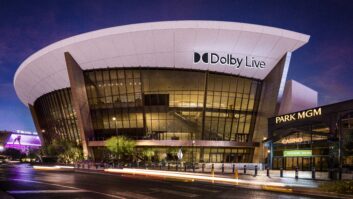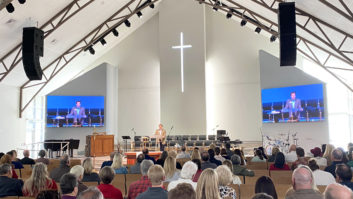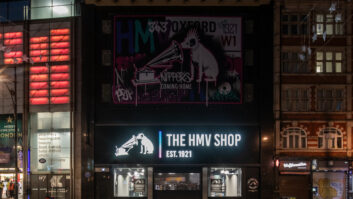
For world-class stadium audio systems, there are considerations beyond simply getting the audio from source to speaker. Phil Ward discusses some of them.
Regulatory standards apply to all components that service fire alarms, including how they’re operated; what sounds or signals they make to communicate the status of emergencies; how those signals are distributed to selected areas; and how faults are dealt with. Audio and AV brands therefore come up against health and safety inspections at every stage from manufacturing onwards and, in Europe at least, the use of products that conform to Part 16 and Part 24 of the EN54 standard is a requirement encountered at least as often in stadiums as in other public sites.
But compliance is only half the story for those with their eyes on the next generation of stadium audio. As said by both Martijn van Overveld, product marketing manager at Bosch, and Brett Downing, sales & marketing director at TOA, it’s the understanding of sound quality that should enable the market leaders to integrate VA and PA in tandem with emerging standards. “Whether standards are universally implemented is not the issue for us,” van Overveld comments. “The standard subscribes to ensuring that voice alarm control and indicating equipment provides the best possible communication for users, installers, the public and fire brigades, as well as providing uncompromised system availability and system supervision.”
“The primary reason for using a voice alarm system instead of the coded warnings given by sounders is to reduce the time taken for those at risk to recognise that an emergency exists, and to give clear instructions on what to do next,” adds Downing. “This means that voice alarm loudspeakers need to achieve a minimum acoustical performance, as well as constructional and environmental requirements, to be suitable for use in fire detection and fire alarm systems.”
“A world-class stadium needs to offer security to fans,” confirms Juan Montoya of Bosch Sistemas de Seguridad, Central Latin America. “The system should produce high levels of sound pressure that can be clearly heard by everyone in the bowl, in the internal zones and on the adjacent outside zones. For this, a regular sound system is not enough. We need supervised and redundant systems.”
And there’s more. Rick Kreifeldt, VP of research & innovation at Harman International and president of the AVnu Alliance technology lobby, cites the recent National Association of Broadcasters (NAB) exhibition in Las Vegas as a potential watershed in the integration of live and broadcast media support. “The World Cup is the most watched event worldwide,” he says, “and we saw announcements from Fox, Arista, Axon and others revealing a surge in adoption of AVB that never happened with CobraNet, EtherSound or anything else. Broadcast is probably the most demanding domain of pro AV, so it’s quite a breakthrough to see that industry breathe the same air as major sports facilities.”
As AVnu Alliance Pro Video Group chair and CEO of Axon Digital Design Jan Eveleens said at NAB: “We’ve already seen strong interest from broadcasters who agree with us that AVB is a game-changing technology for the industry. The underlying standards and technology are already available. As part of the existing IEEE 802.1 suite, AVB makes a standard Ethernet network suitable for a full-blown production backbone.”
Perhaps Ravenna and Dante will have to wait for the next time Italy hosts the World Cup.
(Picture – Daegu stadium, South Korea – courtesy of Wrightson Johnson Haddon & Williams Inc.)
www.avnu.org
www.boschsecurity.com
www.harmanpro.com
www.toa.eu







